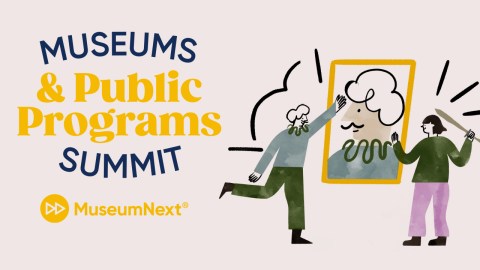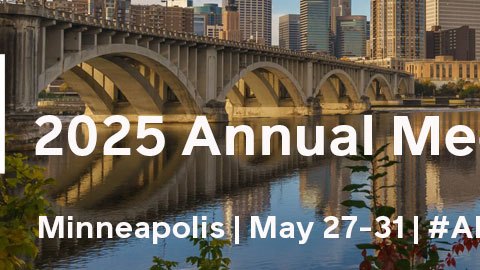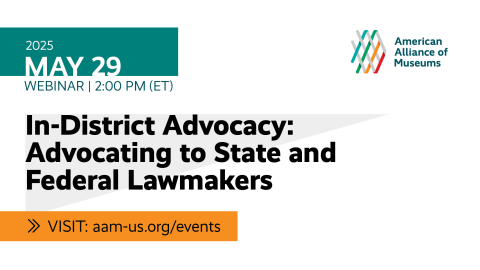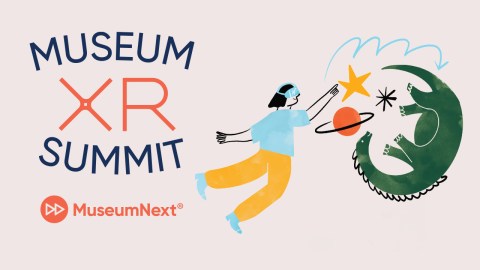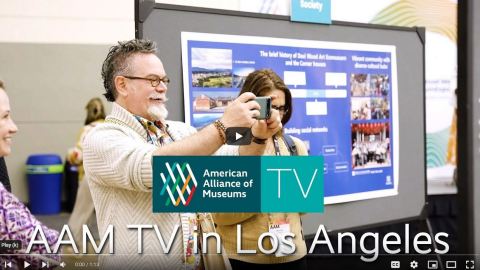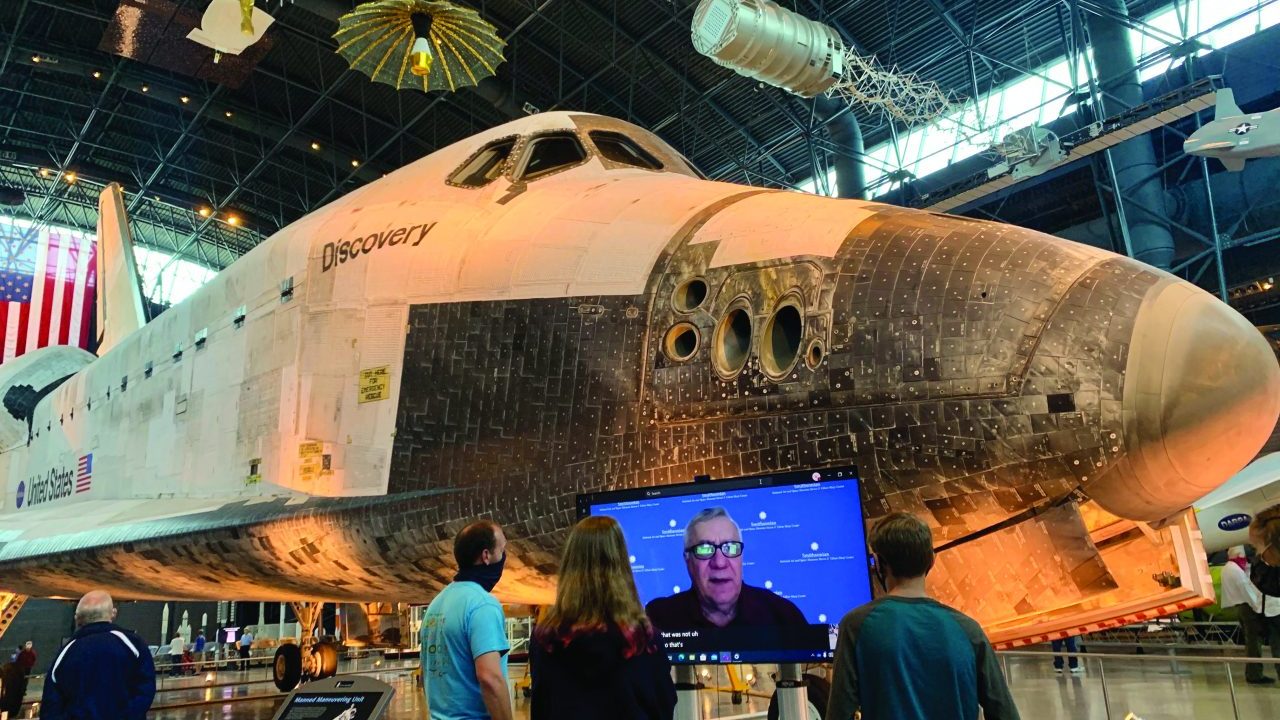
Volunteering creates a national character in which the community and the nation take on a spirit of compassion, comradeship, and confidence.
— Brian O’Connell, past President, Independent Sector
This article originally appeared in Museum magazine’s January/February 2025 issue, a benefit of AAM membership.
How can museums create equitable, accessible, and effective volunteer programs?
By giving their time, volunteers help knit together communities and plug the gaps in government and for-profit systems of support. This generosity benefits the giver as well: volunteering provides a meaningful source of social connection and contributes to health and wellbeing. But the who, how, and why of volunteerism is increasingly being questioned both by volunteers and the organizations to which they give their time.
What is the best future we can envision for volunteering in our society and in museums? How can museums address issues of equity and accessibility while valuing the work of people who donate their time, and recruiting the volunteers they need to do their work?
The Challenge
When Alexis de Tocqueville toured the United States in 1831, he was impressed by the vital role voluntary associations played in the new republic. “America’s strength,” he wrote, “is in its groups.” As the US matured, volunteer associations of all sorts, from fire brigades to mutual aid societies, formed an essential part of the country’s infrastructure. Fast forward 250 years, and roles that were once filled by volunteers have become increasingly professionalized. At the same time, society has become more aware of the inequities that shape and are shaped by who can afford to donate their time.
Volunteer participation has ebbed and flowed in recent decades—surging in the wake of the 9/11 terrorist attacks, then declining over the next 15 years, and bottoming out in 2015 when slightly less than a quarter of American adults engaged in “formal” volunteerism (donating their time through an organization). This rate ticked up to over 30 percent by 2018 but cratered to a new low of 23 percent in the midst of the challenges posed by the COVID-19 pandemic. During that crisis, intent to volunteer soared, with 69 percent of millennials saying they were more likely to volunteer than pre-pandemic, but it has yet to be seen if those good intentions will translate into behavior. Long-term cultural and economic shifts may mean fewer people will have the time or inclination to volunteer: baby boomers are putting off retirement or choosing to work part time, college graduates are working long hours and often multiple jobs to pay off debt, parents spend more time supervising their children, and teens’ schedules are crammed with extracurricular activities.
A creeping decline in volunteerism might be driven by the increasing wealth inequality in the United States. The total dollars and hours donated to charity continue to be fairly robust but come from a smaller and smaller pool of affluent households. This could be a case of both cause and effect: people who are economically stressed are less able to volunteer, but volunteering itself is a way of amassing social capital. Spiraling inequality means that the benefits of volunteering (health, connections, knowledge) accrue primarily to people who are already financially secure.
This trend is troubling on multiple levels. Nonprofits that depend on volunteers to provide critical services to their communities—food, housing, legal aid, tutoring—are unable to meet the demand. Individuals miss out on the well-documented benefits of volunteering: improved mental and physical health, a sense of purpose, enhanced life satisfaction and self-esteem, and wider social connections. And some commentors worry that a decline in volunteering will contribute to already high levels of political and social polarization.
If this trend continues, what would a “post-volunteerism” America look like? What would we, as a culture, lose? Much of America’s infrastructure for emergency services, especially in rural areas, depends on volunteers. As volunteers become scarce, response times become longer, and local governments strain to create and fund fire departments and ambulance services. The US has long relied on volunteers to create a social safety net that in other countries is provided by the government. If that net of unpaid labor frays, how will the country meet the needs of people who are hungry or homeless? Who will tutor children, assist our elders, and provide relief during disasters?
Conversely, what would it take to reverse these trends and create a future in which volunteers play a bigger role? Many schools try to instill the habit of volunteering in teens by making public service a graduation requirement. However, evidence is mixed as to whether such “involuntary volunteering” has a positive or negative effect in the long term. Some have proposed removing the significant financial barriers to volunteering, noting that people who work long hours to meet their own basic needs have less time to share. How might that be done? To reduce wealth inequality, over 20 cities in the US are experimenting with providing a guaranteed basic income to low- and middle-income residents.
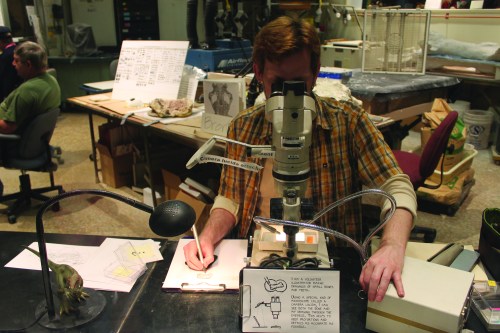
Evaluations of these pilot projects show that these stipends help families meet their essential needs, help recipients secure full-time work, and improve children’s health. In time, studies may also reveal whether basic income also increases volunteer engagement.
What This Means for Museums
It would be difficult to overstate the importance of volunteerism to the museum sector. As of 2009, museums overall reported a median of about six volunteers for every paid staff member. That ratio soared to 18:1 in museums with budgets under $250,000, but even in the largest museums, volunteers generally outnumbered paid, full-time staff two to one. An uncounted (but large) number of museums in the US have no paid staff at all and operate purely with contributed labor.
Museum volunteers fill a wide variety of roles: in education, research, collections preparation and care, and visitor services. While some people come to these tasks with only time and a willingness to learn, many bring specialized knowledge and skills that are essential to a museum’s understanding of its community and its collections. Volunteers are sometimes the most effective connections to a museum’s local community, serving as trusted ambassadors and essential interlocutors. They often donate money, as well as time, and take the lead in raising funds from others. In private nonprofit museums, the people who are ultimately responsible for the museum’s finances and operations—the trustees—are almost always volunteers. A museum’s volunteers are essential not only for the work they do but for the resources they unlock: trust, knowledge, access, connections, and credibility.
Given the health, social, and educational benefits that come with volunteering, the opportunity to volunteer is in a very real sense a service museums provide to their communities. Volunteering gives citizen scientists, historians, and artists opportunities to do meaningful work, enabling those fields of endeavor to benefit from the wisdom and work of amateurs. Volunteering is a pathway for teens into professions they might otherwise never have been exposed to.
But a national shortage of volunteers is threatening to disrupt this complex ecology of mutual care. During the pandemic, many museums paused their volunteer programs, even after they reopened to the public, to protect vulnerable individuals. As of 2024, even as staffing and attendance have begun to rebound, volunteering continues to lag, with one-third of directors reporting their museums are unable to find the volunteers they need.
And the challenge is often more complex than rebuilding the volunteer programs museums had in 2019. The pandemic amplified growing concerns about low pay and precarious work, and the potential impact of volunteering on paid staff. The US has tried to untangle the relationship between paid and unpaid labor for over a century with mixed success.
When the Fair Labor Standards Act was enacted in 1938, it tried to ensure that volunteers weren’t misused at the expense of paid labor. It has proved difficult, however, to map these good-faith guidelines onto actual practice. When a historic house has three paid staff and 20 volunteers, how can one determine whether those volunteers “perform work that would otherwise be performed by paid employees?” What about an all-volunteer organization, where unpaid staff have to engage in “commercial activities” if the museum wants to sell postcards, books, or t-shirts? Or some natural history museums where whole collections may be created and maintained by volunteer curators and caretakers?
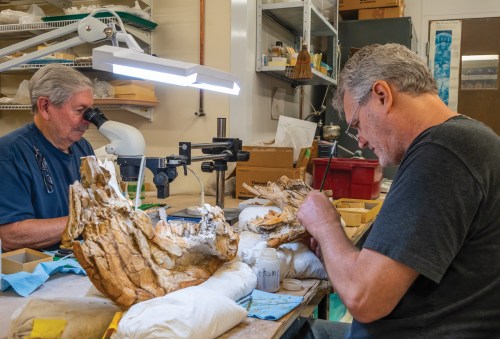
Treating volunteers as unpaid equivalents to paid staff has been normalized in operational practice, as well. The Association for Volunteer Administration offered the first certificates of training in the 1980s. In museums, volunteer management began to take on a mainstream role in the following decade, often mirroring the practices applied to paid employees: mandating, for example, background checks, position descriptions, goals, and performance evaluations. These procedures addressed some real needs: clarity around expectations, accountability, and alignment with the organization’s plans and priorities. But they also created some unintended barriers to accessibility of volunteering (see “Steps Toward Equity in Volunteer Engagement” sidebar on p. 18) and further blurred the purpose and nature of volunteerism. Both law and practice tend to obscure a critically important point: volunteerism is not simply a way to recruit unpaid labor. The relationship between volunteers and the organizations to which they give their time is complex and multifaceted. Successful, mutually beneficial volunteer programs are designed to support those connections.
Museums have been reshaping their operations to foster diversity and accessibility, bringing those values to bear on volunteer programs as well. Many are increasingly aware that volunteers are often, quite literally, the public face of the museum and are figuring out how to recruit volunteers who reflect the audience the museum wants to serve. Given growing awareness of the benefits conferred by volunteering, museums are also asking not only “How do we get the people we need” but also “How do we make volunteer opportunities accessible to all?”
For all these reasons, and more, many museums are pausing to evaluate how relationships with volunteers are working or not working, and how volunteer programs can create mutually beneficial relationships that meet the needs of the organization, individuals in the community, and the community as a whole. These experiments are many and varied, and not without bumps. Some museums have terminated existing volunteer programs, replacing them with new initiatives focused on recruiting people who are more representative of particular audiences with regard to age, race, culture, or gender, hoping this approach will strengthen ties to and engagement with the community. Some museums are hiring staff to do work formerly accomplished by volunteers. Some staff may feel this gives the museum more control over process and outcomes. In some cases, because of both historic and current harms done to marginalized communities, it may seem inappropriate to expect people from those communities to provide their labor for free.
Change may be necessary, even inevitable, but change is often hard. In some instances, the restructuring process for volunteer programs has made people who have given substantial time and money to the museum feel marginalized or disrespected. Even when the intent is to increase diversity overall, certain actions may smack of ageism, when, for example, the volunteers being “laid off” are older adults.
Several trends might shape museum volunteerism in the future, one way or another. Museum unionization has accelerated in recent years, and while unionization does not preclude volunteerism, union contracts may address the use of volunteer labor. More museums are committing to paying a fair wage/living wage with concomitant increases in staff salaries. Absent a corresponding increase in funding, this may lead to fewer, better paid positions and a greater need for volunteers. Many museum tasks (stuffing envelopes, staffing information booths, even leading tours) often performed by volunteers have been replaced or disrupted by technology. How might emerging technologies, including artificial intelligence, reduce the number of people needed to perform this work? These and other forces of change will determine whether we build a future in which volunteerism revitalizes our communities, or one in which volunteerism is an artifact of the past.
Sidebars
Museums Might …
- Create a culture that mindfully values the contributions of volunteers and respects the experience and knowledge they bring to their work.
- Value their volunteer program as a good in and of itself, for the benefits it provides to volunteers and the community, and not just for what it can do for the museum.
- Evaluate the current organizational culture for both staff and volunteers. Are there tensions arising from the power, status, and respect that goes with paid versus unpaid work, amateur versus professional standing, young versus old? How might those tensions be defused?
- Embed the volunteer program, its goals and activities, into the strategic and operational plans.
- Include volunteers/volunteer representatives from the beginning in key processes that set the direction and tone of the museum, including visioning and planning. This may include creating leadership roles for volunteers to give them a formal “voice” in decision-making.
- Evaluate institutional needs and how they do or do not align with the current cadre of volunteers. If major realignments are needed, include current volunteers, and representatives of groups that may be future volunteers, in the process of planning for change.
- Consider the needs and expectations of prospective and existing volunteers: what kinds of experiences would make them feel valued? What might the museum do to make volunteering accessible to people who cannot currently participate (e.g., evening hours, shorter time commitments, assistance with transportation)?
Steps Toward Equity in Volunteer Engagement
Adapted from Co-Creating Racial Equity in Volunteer Engagement: Learning from Listening Sessions with Black, Indigenous and People of Color, Minnesota Alliance for Volunteer Advancement, 2021
In 2020 and 2021, the Minnesota Alliance for Volunteer Advancement held eight virtual listening sessions with a total of 40 participants who identified as Black, Indigenous, or a person of color. These individuals were invited to contribute their perspective on the nature of volunteerism, motivations, barriers, and recommendations for building equitable volunteer opportunities.
Participants identified a wide-ranging variety of barriers arising from current assumptions about how volunteer programs should be run. These included schedules that didn’t accommodate the needs of busy working adults; expectations around the minimum number of hours required on a regular basis; and burdensome paperwork and procedures. Background checks, they pointed out, may not be necessary for all kinds of work performed by volunteers, and disproportionately exclude BIPOC people because of inequities in the justice system.
They also offered practical recommendations for increasing equity in volunteer engagement, including:
Remove Barriers: offer flexible schedules and support small time commitments. Most of all, be flexible: one approach may not work for all communities.
Prioritize BIPOC Leadership: if volunteers don’t see BIPOC leaders on staff, they may find the organization less appealing as a place to give their time.
Build Trust: organizations are more credible if they are already working with BIPOC communities and have built authentic relationships with other community organizations.
Foster A Welcoming Environment and Culture: participants noted “being accepted in these volunteer spaces is critical.”
And finally, consider when work should be compensated, rather than unpaid.
Museum examples
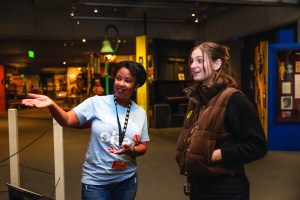
Thoughtful Restructuring
Over the past four years, the Oakland Museum of California (OMCA) has reimagined its volunteer program as an all-encompassing set of experiences that provide consistent and sustainable opportunities for mutual engagement for OMCA’s community and the museum. Building on the strength of a 50-plus-year program, OMCA develops a variety of long- and short-term opportunities that match a range of volunteer interests and capacity and are aligned with the museum’s current needs. As part of the reimagining process, museum staff engaged volunteer leadership in a process of co-creation to adapt to the changing landscape of volunteerism and to embed equity into all facets of operations. With the launch of the new volunteer program in 2022, OMCA articulated new volunteer program core values, created roles that accommodate a range of interests and time availability, implemented evaluation and provided required cultural competency training.
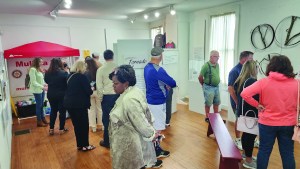
All Volunteer
The Harrison Township Historical Society (HTHS) is an all-volunteer, private-public venture in Mullica Hill, New Jersey. The society was established in 1971 by a group of volunteers appointed by township officials to repurpose the community’s 1871 Town Hall as a local history museum. The society’s operations rely on over 100 volunteers who handle collections management, exhibition curation and installation, public programs, school tours, research requests, special events management and staffing, marketing, grant writing, and fundraising. HTHS has expanded its volunteer base beyond its membership through collaborations with local schools, civic and religious organizations, and nearby Rowan University. The result of this deep engagement and diverse volunteer base is a high-functioning organization that serves the needs of its community. The society’s high-quality content and experiences include an exhibit recognized by the American Association for State and Local History with the 2022 Albert B. Corey Award.
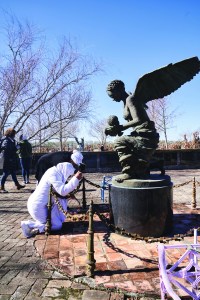
No Volunteers
Since its opening in 2014, Whitney Plantation in Wallace, Louisiana, has opted not to use unpaid labor. The museum does not have a volunteer program, nor does it offer unpaid internships. This decision is based on the site’s history of exploitative labor practices as a plantation from 1752–1975. Many generations of workers at this site were paid nothing when they were enslaved. Later generations worked during the repressive Jim Crow era in which wages were kept artificially low and workers stayed in debt to the company store. Because of this legacy, the museum has chosen not to allow any unpaid labor on the site. The museum has a variety of approaches to volunteer-type labor. Internships may be supported by grants or partner institutions that pay wages on the museum’s behalf. People who want to volunteer their time may receive honoraria rather than wages. This ethos extends to the gift shop as well, where museum staff have a preference for union-made and fair-trade goods.
Resources
Designing a Museum Volunteer Program, 2nd edition, AAM, 2024
This toolkit contains eight case studies from museums, and resources and information on DEAI, evaluation, and volunteer management systems. It provides guidance on how to differentiate the roles of paid staff and volunteers, and on having “tough conversations.”
aam-us.org/programs/publications/toolkits/designing-a-museum-volunteer-program/
Denver Art Museum Volunteer Engagement Strategic Plan 2019 – 2022
This plan focuses on three critical areas: nurturing a collaborative and unified workforce of volunteers and staff; broadening the diversity of volunteers and improving the museum’s ability to leverage their skills, talents, and uniqueness; and empowering volunteers and staff for maximum effectiveness.
bit.ly/3CgZwBl
American Association for Museum Volunteers (AAMV)
AAMV provides a forum for the discussion and distribution of best practices in the field of museum volunteering and internships, expands opportunities for networking, and advocates for volunteers in museums.
aamv.org

